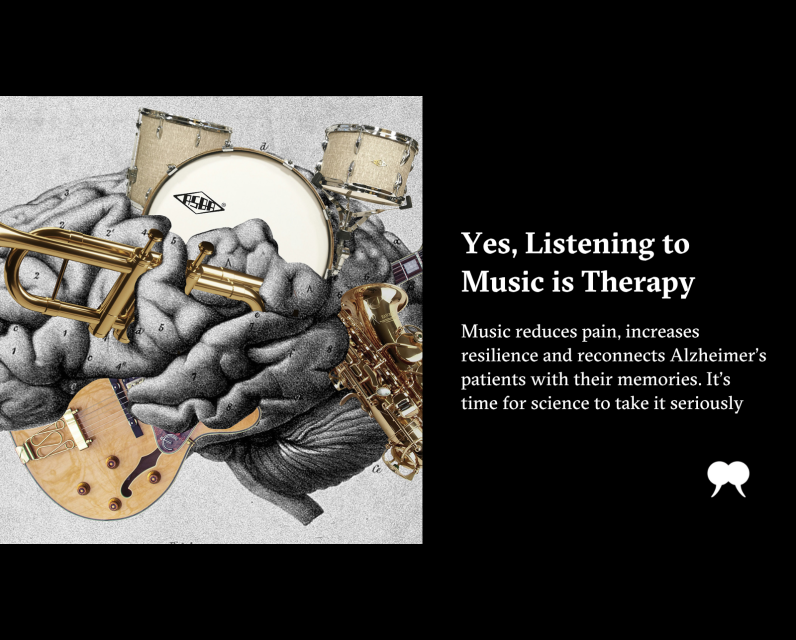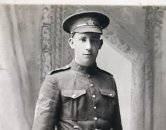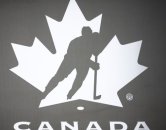Source Feed: Walrus
Author: Daniel J. Levitin
Publication Date: October 3, 2024 - 06:30
Yes, Listening to Music Is Therapy
October 3, 2024

I’m walking on Revere Beach outside of Boston, where the low tide has pushed the ocean far away from the shore and the wet sand is squishing up between my toes. I came here for no particular reason—just to clear my head after two frantic weeks in the city, surrounded by noise, construction, and crowds. A briny, sweet smell hangs over everything in the thick humidity of September. Warm air and wafts of cold breeze intermingle—it is T-shirt and jacket weather both at the same time.
I sit in a hard plastic seat on the blue line as the car speeds smoothly forward. The blue line trains are some of the oldest; they feel like an anachronism. I’m counting the stops to Government Center, where I’ll get off to pick up the green line, looking at the passengers. A couple of small children with plastic buckets taking sand souvenirs home. A college student lost in her book. A man with workboots and the dust of a day’s work clinging to his clothes. As we get closer to town, more people get on, and I can no longer see the children or the young woman with the book. The man in the workboots gives me a nod, and I nod back. The train lurches, and we instinctively grab onto a pole to stabilize ourselves.
Before reaching my stop, I find myself in a coffee shop, my saxophone case under the table at my feet. I’m reading the morning newspaper, people-watching, enjoying a Danish and picking up bits of conversation around me. The place is jumping.
Different cities have distinct feels—the air smells dryer or damper, the sounds bounce off buildings and the landscape in their own way. I walk through the redwood forests of Muir Woods in Marin County, California, and find a spot that is so quiet I lie down on my back, staring up at the tops of trees more than a thousand years old. The blue sky barely peeks through the dense greenery. I can’t hear a single human-made sound, and at this time of day, the birds are quiet—I have to wait a few minutes to hear a song far off in the distance. I close my eyes. Hello darkness, my old friend. With no wind, even the trees are silent, and I’m lulled into a state of pure calm, a stillness and majesty that are mind altering. I’m hypnotized by the thick, dark red bark. These trees exist on their own time scale, so much longer than human life.
Someone at the bar drops a glass, and it shatters. I open my eyes and realize I’ve been here all along, in this room. The Keystone Korner, a jazz club in my hometown of San Francisco. Art Blakey and his Jazz Messengers have been playing, and I was lost in the music, here and yet not here, my mind taking me through different places and scenes all while sitting in my chair at this table. Wynton and Branford Marsalis have just taken solos on “In Walked Bud” and passed them on to Donald Brown, the young pianist. All of us were young then—still in our twenties, except for Art, who was my grandfather’s age—beaming, moving things along, “directing traffic,” as he says.
Until the glass crashed, I had been in what neuroscientist Richard Davidson from the University of Wisconsin calls experiential fusion—the state of being so absorbed that your consciousness itself becomes fused with what you are experiencing. During experiential fusion with music, you temporarily lose awareness of yourself as an individual entity, separate from the music; you and the music have become one. If someone touched your hand and asked you, “Are you aware that you’re in a jazz club?” you’d almost certainly say, “Yes.” But that awareness is born only in the moment of the interruption, as you get yanked out of your absorption, back into the mundane. In both moments, you’re attentive to the music, but only in the second moment do you have meta awareness. If this sounds strange, compare it to sleep. If someone wakes you up and asks if you were sleeping, only retrospectively can you assess that sleeping was just taking place and it was you who was doing the sleeping.
The band launches into “In a Sentimental Mood.” Billy Pierce, who’d been my sax teacher just the previous year before Art picked him up mid-semester, is also up on the bandstand. He looks at me and smiles. He starts to play, and I’m transported again to another time and place. I couldn’t tell you where—but it is in turns thrilling, heart breaking, bustling, radiant, and always, always moving forward.
Today, in my sixties, after a bad day at work, getting cut off in traffic, or just feeling blue and despondent for no discernable reason (that is a part of the human condition), there is refuge. Picking up my guitar or sitting at the piano, it’s as if I’m in a bubble—feeling safe, contented, and that all is right in the world. And when playing music with Victor Wooten, Rosanne Cash, or Carlos Reyes on a good night, we feel that bubble extend out into the back of the room and lift up everyone in it.
My father’s father, Joseph, was a scientist and a medical doctor with an extensive collection of 78 rpm records of big bands, opera, and symphonies, and 33 1/3 rpm sing-alongs. As a physician, he lived in a world of evidence and scientific truths. As a humanist, he immersed himself in art; his home was filled with paintings, sculpture, literature, and music. We may think of science and art as standing in opposition to one another, but they are bound by a common objective. Science seeks to find truth in the natural world; art seeks to find truth in the emotional world. Medicine fits somewhere in between, bridging science, art, and the emotions that move us toward the will to survive, to heal, to take our medicine, to exercise, and to put in motion all those things that keep us healthy. It is no accident that the word “motion” is part of the word “emotion.” Both come from the Latin “emovere”: to move, move out, or move through. As music moves through us, it signals, exercises, and invokes emotions.
Prehistoric medicine relied on a collection of folk remedies and superstition, before evolving into what we do today: use evidence-based treatments to cure disease and promote lifelong wellness. For all its seeming precision, the practice of medicine is both a science and an art. To an outsider, it may look like following a recipe, but as every bread baker knows, changes in humidity, age of the ingredients, and random factors affect the outcome. In medicine, every case is different; no two cases of a disease or injury present in exactly the same way. Good medicine relies on clinical judgment, refined through the same sort of trial and error and creative problem solving that artists and scientists use. Both the master physician and master baker must improvise. (Although the thought of a brain surgeon “improvising” may fill you with terror, it’s actually necessary, as neurosurgeon Theodore Schwartz explains. “Not only is the normal anatomy of every human variable, and unique, every tumour has its own configuration that distorts the landscape into which it has dug itself in a slightly different way. Inevitably, the reality we encounter differs from our expectations of what we thought we would find.”)
The most important distinction, then, isn’t in separating artists from scientists and doctors but in separating creative thinkers from formulaic ones, separating those who can tolerate uncertainty from those who cannot. Art, science, and medicine trade in doubt—and in its remedy, improvisation. Moreover, to be effective, the musician, the therapist, the scientist, and the physician must establish a rapport and a relationship of trust with people they may have never met. They remain alert at all times while appearing relaxed. They monitor reactions unobtrusively, connecting and responding in real time to their behaviours, to the unexpected.
Music affects the biology of the brain, through its activation of specialized neural pathways, its synchronization of the firing patterns of neural assemblies, and its modulation of key neurotransmitters and hormones. Together, these drive a range of changes that are important to our survival and well-being. Music promotes relaxation when we’re stressed; it can reduce blood pressure or make diabetes management easier; it soothes us when we’re depressed and energizes us for exercise. Professional athletes listen to music to pump them up when they compete—often hip hop but not always (LeBron James listens to jazz and Beethoven). Patients with Parkinson’s use it to help them walk; patients with Alzheimer’s find that it reconnects them with themselves and improves memory. Music reduces pain, increases resilience and resolve, and can actually change our perception of time, such as when we’re lying in a sickbed with nothing else to do, going on a long road trip, or immersed in a VR game.
Engaging with music, whether as a listener or a player, facilitates entry into the brain’s default mode network, a path to the subconscious that is instrumental to everything from problem solving to relaxation, from creativity to immune system function. And for many, music can connect us to a sense of a higher power, of great and enduring beauty, and listening to or playing it can provide some of the most exhilarating and meaningful moments of our lives. Those moments may come from a concert by Wiz Khalifa, Beyoncé, or U2; we may experience them alone in the privacy of our earbuds or when the stillness of a room suddenly comes alive as we play the first few notes of Beethoven’s Pathétique sonata on the piano.
Companies such as Spotify, Apple Music, YouTube, and Pandora hope to curate effective playlists that not only help with mood regulation or mood change but target your individual tastes. Already, these music services are adaptable, learning what you skip and what you listen to. Within the next five years, they will do even better. Through data mining, the companies’ software knows your age, gender, income, geographic location (often within a few metres), political views, what time of day it Is, what things you’ve searched for. Through your smartwatch, they log your heart rate and skin conductance. The algorithms register that you’re driving your car across town on a Sunday at 4 p.m., the GPS knows you’re headed toward your parents’ home and, based on previous months of data, that once you get there, your blood pressure usually goes up (perhaps because they berate you for not making more out of your life). These algorithms have tracked what music you usually select for yourself on that drive. They also know from scanning your emails that your latest lab report showed you’ve got high blood pressure. Soon, personalized playlists will be curated automatically and in the background, becoming essentially invisible to you—your car or smartphone will offer to play you what it thinks you need at this particular time, based on your individual tastes. If this sounds far-fetched, consider what existing smart devices already do. Smart thermostats in your home learn your comings and goings, which room of the house you’re in at various times, what temperatures you like when asleep or awake. If you have a smartphone or digital assistant, you may have found that when you say out loud to a friend that you need new walking shoes, a TikTok or Instagram ad for shoes pops up in minutes.
To customize playlists to each person’s tastes, most algorithms use collaborative filtering (people who listened to Drake also listened to Doja Cat; people who listened to the Cure also listened to the Smiths). Elegant research by Cambridge University’s Jason Rentfrow and his colleagues is offering a new and more precise approach to creating taxonomies of musical tastes and preferences, overlayed with demographic information, attitudes, and personality characteristics. This is the future of personalized playlists and, hence, the future of music therapy.
Beliefs about music’s power to heal the mind, body, and spirit date back to the Upper Paleolithic era, around 20,000 years ago, when ancient shamans and other healers used drumming in the hopes of curing a wide range of maladies, from mental disorders to wounds and illnesses. Our word “shaman” comes from the Russian “shaman,” for a person of special status within a tribe who acts as an intermediary between the natural and the supernatural worlds, using magic to foretell the future, cure illnesses, and control spiritual forces. The term was originally applied to the Tungusic peoples of Siberia and northeast Asia. (It is often broadly applied to any ancient or modern person who “travels” in non-ordinary reality to gain information and possibly to heal spiritual, mental, or physical ills, such as the Inuit angakok, the Mentawai sikerei, the Korean mu, the Azande boro ngua, and the !Kung n/um k”ausi.)
The shaman, medicine man or medicine woman, medium, or psychic who is entrusted with healing powers is a cultural universal, recurring across human societies and nearly every hunter-gatherer tribe. The shamanistic tradition was begun by women, and contrary to popular misconception, it was far from a men-only profession. Shamanism is just one historic antecedent of twenty-first-century music therapy. During the eleventh century BCE, near the end of his life, King Saul suffered from periodic depression and agitation. On such occasions, we’re told, he would summon David, the same David who battled Goliath and who was reputed to be among the greatest musicians in the kingdom.
David would take the lyre and play it; Saul would find relief and feel better, and the evil spirit would leave him. (1 Samuel 16:23 NIV)David could slay a giant with a rock and depression with a lyre. Music for healing is as old as our species and is still practised by a majority of peoples in the world today; music’s ability to heal—to provide a brighter day, to promote physical and mental health—knows no boundaries of language or culture. As Longfellow famously penned: Music is the universal language of mankind. Centuries earlier, a continent away, Confucius wrote: Music produces a kind of pleasure which human nature cannot do without. It is a recent feature of Western society that we have separated these two, healing and music. We tend to see healing as the province of doctors and music as entertainment. Perhaps it is time to reunite two of the most intimate parts of our lives. Scientific advances in the past ten years have provided a rational basis for this reunification, opening a dialogue between health care workers, health insurance companies, and all the rest of us. The research allows us to take what had been speculation, anecdotes, and observations untethered from evidence and join them in equal partnership with prescription drugs, surgeries, medical procedures, psychotherapy, and various forms of treatment that are mainstream and evidence based. The advances were spurred by this 20,000-year history as scientists tested the ideas in the laboratory and in clinics. It has been said, “Music gives soul to the universe, wings to the mind, flight to the imagination, and charm and gaiety to life and to everything.” Plato believed that music can bypass our rational mind: “More than anything else, rhythm and harmony find their way into the inmost soul and take strongest hold upon it.” It is perhaps no surprise to learn, then, that the Greek god of medicine, Apollo, was also the god of music. Hippocrates (fifth century BCE) is known as the father of Western medicine, and he believed strongly that music could be used to treat a variety of physical and mental health conditions. Although no musical prescriptions have survived, we do know that specific scales were used to treat particular ailments, and Athenian physicians would prescribe particular tonalities to heal colds, aches, depression, or injuries. For example, Dorian mode was considered suitable for mourning; Phrygian mode was used to control digestive problems; Lydian imparted good cheer, optimism, friendliness, and a tendency to laughter, love, and song when it was well executed but could lead to weeping and sadness when not. Seven hundred years later, Ptolemy, living in the Roman Empire, wrote his treatise Harmonics, in which he elaborated on the relationship between music, emotions, and therapy. Today, some sound-healing therapists, meditation headphones, and relaxation music apps use tones of particular frequencies, or music that contains those frequencies, to achieve goals for healing and self-care. Although the ancient Greeks knew (or intuited) things that took years for science to catch up with, they were also wrong about many things, as science has borne out. For example, there is no scientific evidence that music’s ability to heal, or to cause changes in mood, or to have any other cellular effects, derives primarily from the specific frequencies of tones used; this has been exhaustively studied. The notion also doesn’t make logical sense, for much shamanistic healing was conducted by singers who would have had no way to calibrate their precise frequencies from one occasion to the next or from one tribe to another. The power of music, then, probably comes not from specific frequencies but from trance-inducing rhythms or a combination of musical elements as they stand in relation to one another—elements including harmonic structure, melody, tonality (major or minor), rhythm, and tempo. In other words, whatever effect a piece of music or sequence of sounds has on you, it’s unlikely that it would stop having that effect if it were shifted by a few hertz in one direction or the other. Another important attribute of music is timbre, the tonal colour that distinguishes two instruments both playing the same note—or that distinguishes one person’s voice from another’s when they’re saying the same thing. Ravel’s Bolero in 1928 introduced timbre as a form-bearing medium—that is, an element of music that could impart both meaning and a unique identity to a musical piece. By the 1950s, timbre had become among the most important attributes of music. Timbre is what allows us to distinguish John Coltrane’s saxophone from that of Stan Getz, or Johnny Cash’s voice from Elton John’s. It is a unique sonic fingerprint. Even records have a timbre all their own—most of us can tell the difference between a recording made in, say, 1940 and one made in 1970 or 2022 by “the way it sounds”—just another way of describing timbre. Some of the beneficial effects of music across history may have accrued by putting patients or entire tribes into a trance state, or by accessing the subconscious, thereby opening a route to healing. An important question is whether there’s something intrinsic in music that promotes healing or, alternatively, if it’s the trance state itself that facilitates healing. It may be that music is just one of several psychological enzymes—catalysts—that can lead to healing through trance. But if there are others, they have not revealed themselves to us as clearly as music has. I take inspiration from the many compelling testimonials of poets and philosophers. Consider the words of the poet Georg Philipp Friedrich Freiherr von Hardenberg (Novalis), circa 1799: “Every illness is a musical problem—its cure a musical solution.” And it was the philosopher and composer Friedrich Nietzsche who articulated what has become a North Star for me in my own research—that music is a way to express thoughts and feelings that cannot be expressed in words. “Life without music,” he wrote, “would be a mistake.” Adapted from I Heard There Was a Secret Chord: Music as Medicine by Daniel J. Levitin (2024), published by Penguin Canada, a division of Penguin Random House Canada Limited. Reprinted with permission from the publisher.The post Yes, Listening to Music Is Therapy first appeared on The Walrus.
New data by the Insurance Bureau of Canada showed insurance claims for auto theft went down by 19 per cent in the first six months of the year.
October 3, 2024 - 10:59 | Saba Aziz | Global News - Canada
Cpl. William Benjamin Cunningham, born near Hayfield, Man., was killed in the Battle of Passchendaele on Oct. 27, 1917, at 21 years old.
October 3, 2024 - 10:53 | Sam Thompson | Global News - Canada
Calls for culture change in hockey arose after allegations of sexual assault by five members of the Canadian junior men's hockey team in 2018.
October 3, 2024 - 10:43 | Globalnews Digital | Global News - Canada




Comments
Be the first to comment